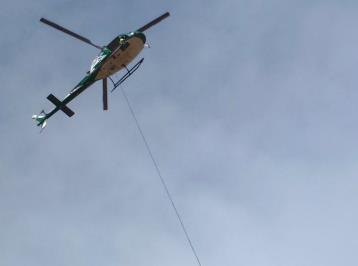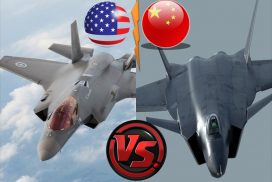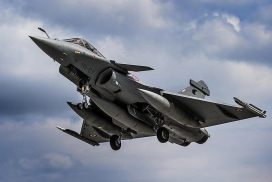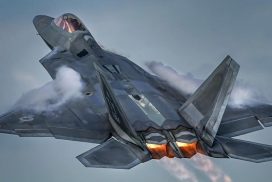 With the thawing of Arctic zone ice due to global warming and ever-increasing demand for oil, hydrocarbon scouts are being forced to even higher latitudes and greater depths in their quest for oil. Prominent emerging areas of “tough-zone” oil exploration are deep-water regions and the Arctic Circle. As most of the easy oil and the large subsurface concentrations of hydrocarbons have already been exhausted, it is the only logical and literal next move for the gargantuan Oil Industry. However, this quest comes with associated challenges which include and are not limited to social, economic and technical. While each challenge is a pressing concern and requires individual thought and process application, one of the most demanding concerns is that of transportation and supply management.
With the thawing of Arctic zone ice due to global warming and ever-increasing demand for oil, hydrocarbon scouts are being forced to even higher latitudes and greater depths in their quest for oil. Prominent emerging areas of “tough-zone” oil exploration are deep-water regions and the Arctic Circle. As most of the easy oil and the large subsurface concentrations of hydrocarbons have already been exhausted, it is the only logical and literal next move for the gargantuan Oil Industry. However, this quest comes with associated challenges which include and are not limited to social, economic and technical. While each challenge is a pressing concern and requires individual thought and process application, one of the most demanding concerns is that of transportation and supply management.
Logistics and supply chain management in “tough areas” namely the deepwater zones and the Arctic Circle are very difficult. The problem lies in the fact that there is no transportation or supporting infrastructure in place in majority of such “tough zones”. While deep-water zones can be supplied via Offshore Support Vessels and other associated crafts, the same is not possible in the permanently frozen Arctic Ocean.
While the Arctic Ocean happens to be the smallest and the shallowest ocean in the world, it is also the coldest and most of its surface area is dotted by numerous ice floes and sheets. Sometimes, a chunk of ice breaks apart from the sheets and forms an ice berg. All of these hamper operations of ships in the Arctic region in a major way. Ships and other watercraft have problems operating in the region. While in summers, the ice is weak or thawed over and ships with reinforced hulls can negotiate via channels of weak surface ice, it becomes nigh impossible to do the same in winters when the temperatures are very low (in the range of -40 C) and heavy ice sheets have formed up. Only the very powerful icebreakers posses the hulls of required strength to break such ice and unfortunately such icebreakers are few and have much other and at-times more pressing concerns. Hence any supply and maintenance operation in the Arctic region is beset with issues of continuity and flow. Saving time and ensuring personnel security is a prime concern in the oil industry.
Helicopters can prove handy in such situations and environments. While use of helicopters in the oil and gas industry is not new, the scale of usage has been constrained by the high funding and technical sophistication required. It is true that several major oil companies have huge fleets of helicopters (including but not limited to EC-105, AW-101s, SH-71s and Mi-8s) and private planes to ferry employees and equipment in several regions but the scale and scope of involvement of aerial assets in “tough zones” will be far more extensive and all inclusive. Helicopters and other VTOL (i.e. vertical take-off and landing assets like VH-22 Osprey) can prove to be major help in sustaining oil exploration efforts in the Arctic Region.
Helicopters have the ability to take off and land vertically and also, can hover over a fixed place for the required time. Both attributes are well-suited for operations on board a drilling vessel where space is a constraint. For example, a helicopter can land on a small helipad to supply provisions and then take off to make space for another craft bringing in fuel or other technical equipments. This improves operating efficiency and smoothen the logistical tail of the operation. Also, since a helicopter is faster, it is more suited to responding to meeting quick delivery situations like bringing in pre-calibrated log which is needed but is unavailable on board the drilling and production platform. Moreover, a helicopter can react much faster to emergencies and be useful in evacuation of personnel from a damaged or stricken platform hence saving lives and money. Also, a helicopter priced at around USD 5-15 million is way cheaper than spending USD 100-150 million over a dedicated Offshore Supply Vessel.
The total lack of roads or railways in the frigid northern reaches of the Arctic zone creates problems when moving drilling rigs and other associated equipment in place. A new and emerging concept is that of heli-portable rigs. Heli-portable drilling involves moving a modular (one that can be easily disassembled) rig by a helicopter to a precise, often very difficult to access location. This improves mobility as well as applicability of rig and can prove to be viable alternative to building roads in remote areas. A heli-portable rig provides added flexibility and lower costs. The technology also has less environmental impact than conventional exploration methods and can be used year-round (estimates how that costs of drilling with help of a heli-portable drilling rig is 25-35% lesser than using a truck-mounted rig with would involve construction of roads and associated infrastructure for a 50 km stretch, the figure with only improve if the model is replicated in the far-more sparsely populated Tundra and Siberia). A helicopter like Mi-8 with a lifting capacity of 4 tons can easy transport a medium sized-rig in 2-3 lifts. A behemoth like Mi-26(lifting capacity-20 tons) can transport even the largest rig in a single lift. Efforts are underway to modify existing helicopters to accommodate rigs by various Canadian and Russian firms.
The use of helicopters in the “tough zones” is not without challenges of its own. The industry has a long history of aviation related accidents where highly skilled oil industry workers have lost their lives (Between 1977-2005, seven fatal accidents took place in flights operating out of UK’s heliport of Aberdeen). Helicopters, despite being crafts of immense technical prowess and abilities are not without failings. They are vulnerable to effects of icing, fog and foreign object ingestion in engines. The weather in “tough zones” is harsh and changes rapidly. This would cause problems in the operation of helicopters.
Many structural and avionic changes must be applied to helicopters before their application in the Frontier Oil Exploration. Suggested improvements include:
1- Better Navigation equipment and support like GPS/GLONASS for easier navigation in the difficult terrain,
2- Improved fuel capacity for longer loiter times and ferry range.
3- Multiple redundant flight systems as flights would be over sparsely populated terrain and large ocean bodies which would make survival difficult in case of a crash.
4- Lastly, improved disaster beacons to aid Search and Rescue teams in case of an incident.
The end of the Cold War and the looming financial crisis has of late, left many Helicopter manufacturers short of orders and funds. The oil industry with deep pockets and even deeper political influence can eat up a huge chunk of this unused pie. Estimates for requirement include 500 Medium to Heavy Lift Choppers in the coming ten years. The opportunity is beneficial for both industries.
The demand for oil will only rise in the future and all efforts must be made to “ Go Deeper, Go Further, Go Tougher: in our quest for oil This is only a small step in fueling the future’s growth.
This article was written by
Krishna Raghav, Priya Sihag,
University of Petroleum and Energy Studies, Dehradun.



